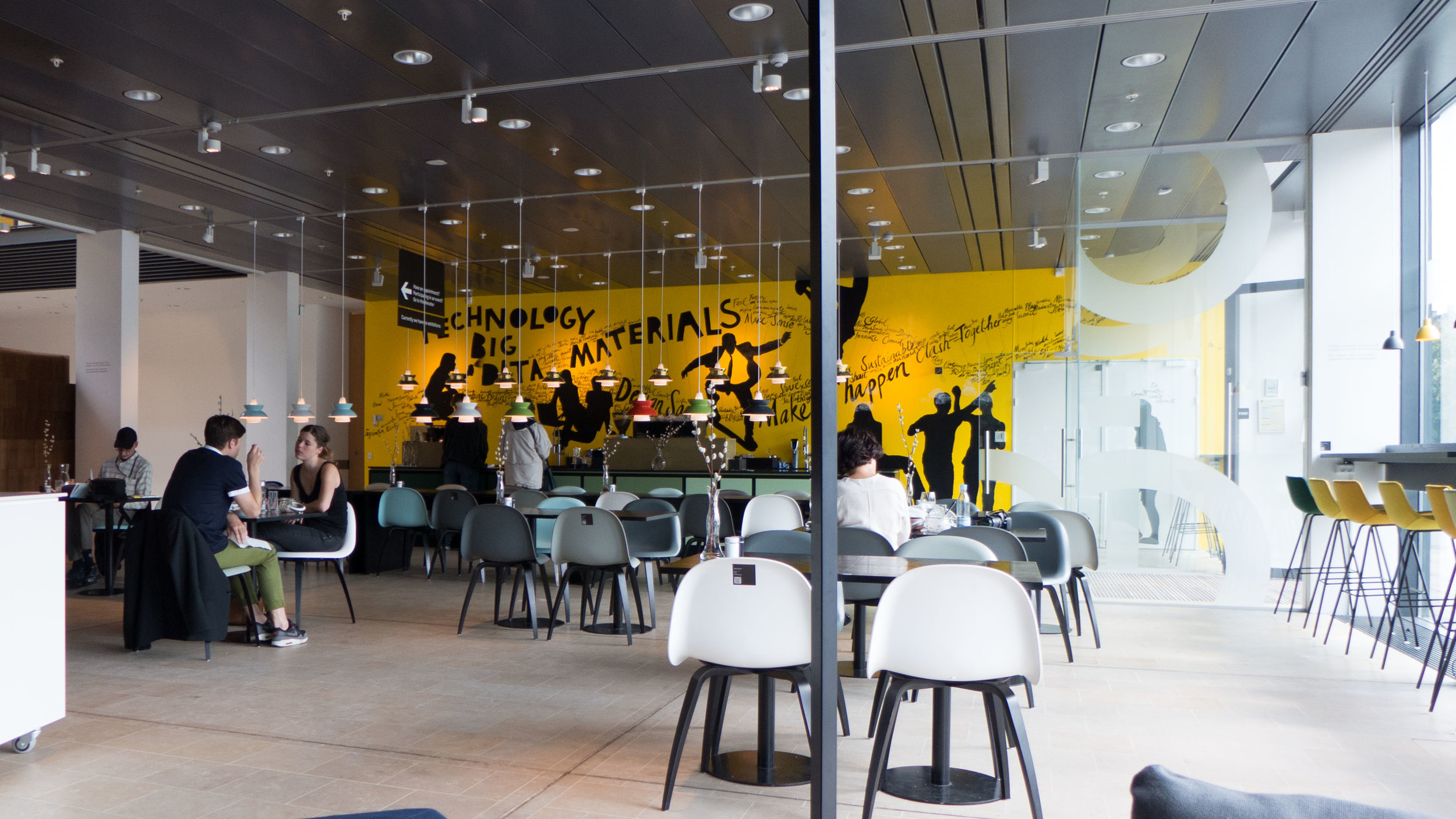The Danish Design Centre
/A new building for the Danish Design Centre at H C Andersens Boulevard 27 by the architect Henning Larsens was completed in 2000. It had a narrow entrance vestibule that took visitors into the centre of the building where there was a large top lit staircase or atrium running the full width of the building. There was a small information desk with a shop and bookstall at one end of the stair hall and a small cafe at the other end. Across the street frontage was a large exhibition space with a conference or lecture theatre above and then above that three floors of offices. Beyond the staircase was a two-storey block again running across the building with large exhibition spaces, the upper gallery being top lit. Anyone wanting coffee sat at tables in the stair hall - a good place to watch the coming and going.
The old Design Centre
The Centre had an ambitious programme of exhibitions including an exhibition I went to in 2009 called See The Light - a large, imaginative and interesting exhibition that ran for over 7 months and explored many aspects of lighting and new technology particularly innovations in energy conservation, part of the UN Climate Change Conference hosted by Copenhagen in December that year.
All the above has been written in the past tense because when I visited the Design Centre on this trip, just over a year since my last visit, there had been some drastic changes. The atrium and the staircase are still there but the large front exhibition space is now a very large cafe, the stair hall is empty, the shop that sold a good selection of Danish design has gone. I was told that the other two exhibition spaces had been or were being subdivided to form offices.
What was three large and flexible exhibition spaces with a small cafe attached is now a very large cafe with offices attached. The centre has also had a name change and is now design society but there seemed to be no design on display although a bank of four monitors flashed up phrases about focus on business design + innovation and the rather worrying phrase new and better products for the ever hungry consumer.
The new Design Society
I am sorry if this sounds like harsh criticism. Speaking to a member of staff, the reasons for the changes became quickly apparent. Government funding for the Design Centre was withdrawn last year and this is clearly an attempt by the staff to cope with a tight budget and move across to business funding.
These changes are in contrast to the changes at the Design Museum on the other side of the city which seems to be going from strength to strength and raises very important general issues about the role and importance of Design Centres in any country.
In part, design museums have a clearer role: they collect the best of the past and where possible the best of contemporary design. Design museums tend to see design pieces as artifacts and as time passes they treat these works quite rightly as if they are valid and special works of art. They do try where possible to support young designers by exhibiting their work and can certainly enhance the reputation of the major architects and designers of each generation by having retrospective exhibitions. They are in the business of showing the best examples of good design.
On the other hand design centres have to act as an intermediary in the commercial world of design. They have to encourage the public to appreciate the best design available; they have an important role in showing new and innovative design and they have a role in encouraging manufacturers to appreciate the value of using good designers to produce well-designed products. It is understood that design centres may have to use corporate funding for some exhibitions and in some cases they may have to compromise their own view of what good design should be because they are in part ambassadors for the manufacturers and the trade of their country.
In that way the Design Centre in Copenhagen, within sight of the iconic SAS hotel showing clearly the design heritage of Denmark; within a few steps of the City Hall and its politicians and with a huge run of front windows onto the pavement opposite the Tivoli Gardens was in a good position to market the best of Danish design to Danes and to tourists and foreign business men visiting the city.
What now? Publicity for future events talks about stake-holders, and societal challenges and in the Autumn they are holding a seminar about Big Data Visualisation where designers and engineers “will use special software to learn how to work with big data, visualize the data and create meaningful solutions based on the visualizations.” Has the Danish Design Centre, succumbed to that awful disease of the 21st century where talking about aims and targets has become more important than doing something tangible and sound bites and the sound of words has become more important than their meaning?
Maybe I’m the one who is wrong. After all, I have just started to write this blog as a good way to communicate information about Scandinavian design. Maybe understanding big data and using digital media rather than a real exhibition of real objects can reach a wider range and greater number of people and encourage them to appreciate and search out good design. I watch and wait with interest.
































